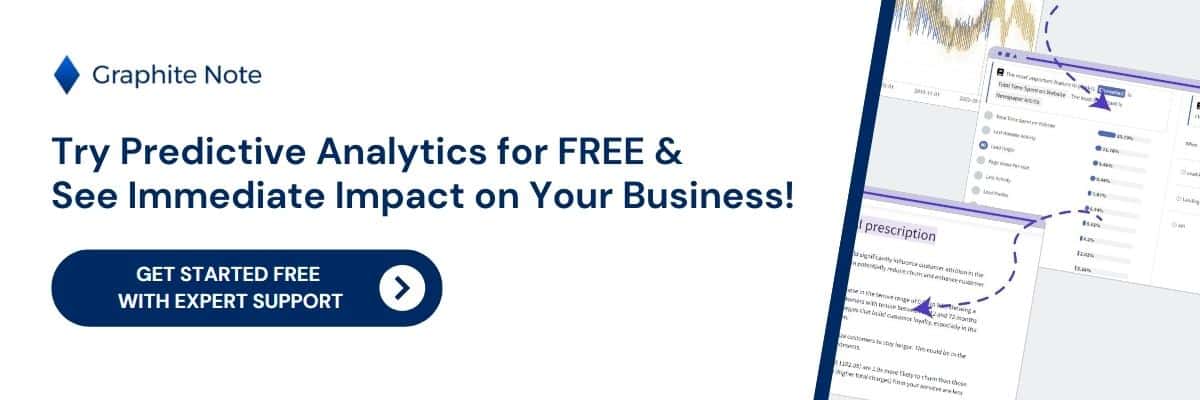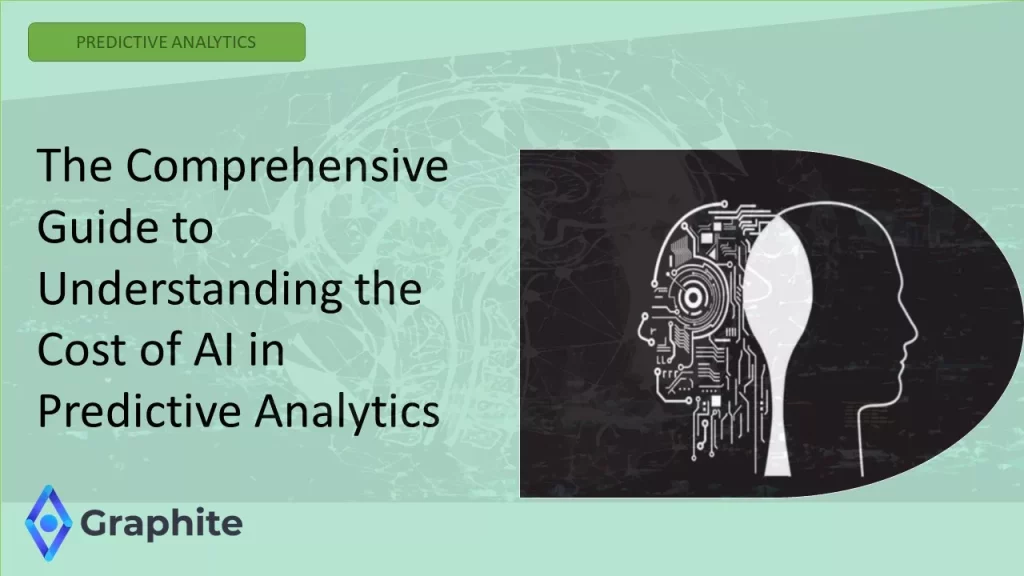Introduction
Predictive analytics can play a key role in fraud prevention and fraud detection. Fraud analytics are a key priority area in the global business realm. Understanding fraud analytics helps to detect and prevent fraud.
What is predictive analytics?
Predictive analytics is the use of historical and current data. Predictive analytics make predictions about the future. Predictive analytics employs statistical modeling, data mining, and machine learning algorithms. Predictive analytics helps you identify patterns in large datasets. Predictive analytics helps you uncover hidden risks of fraud. In turn, you can take proactive action to prevent them. Predictive analysis enables you to identify and act on fraudulent activities. Predictive analytics then helps you to reduce losses, protect assets, and maintain customer trust.
Fraud detection and prevention
Fraud is a global problem that can have far-reaching consequences. Fraud affects individuals, businesses, and society. Fraudulent activities can take many forms and cost billions of dollars each year. Identity theft, insurance fraud, and healthcare fraud are some examples. Comprehensive fraud protection is needed. The level of insurance fraud, online fraud, and fraudulent transactions grows daily. Fraud cases, like credit card fraud, can have devastating effects on people’s livelihoods. As fraud cases continue to grow, your business needs to be able to predict and detect fraudulent transactions.
Online fraud
Online fraud is getting more sophisticated. Online fraud is also growing. A Recorded Future report showed that 60 million payment card records were compromised in 2022 and posted on the dark web.
Traditional fraud detection
Traditional fraud detection methods, such as manual audits and investigations, are limited. They are limited in speed, accuracy, and scalability. That’s where predictive analytics and predictive analysis comes into play. Predictive analytics offers a new avenue for detecting and preventing fraud. Advanced analytics can help to prevent all types of fraud. This includes credit card fraud. Using advanced analytics as a fraud detection process can help secure our world.
Challenges of using predictive analytics in fraud detection
Let’s discuss the main challenges associated with predictive analytics in fraud detection. This will help you improve your predictive analytics system. That will help to safeguard your business against potential financial losses.
- Changing fraud patterns over time: Fraudsters are evolving and finding new ways to get around business systems. Fraudsters continue to commit fraudulent activities. This makes it difficult for predictive modeling to keep up with the patterns. That makes it difficult to detect fraud. Machine learning models need to be continually updated to remain efficient and effective. Failure to update the models can result in a decrease in performance. That renders them useless. Predictive modeling should always be enhanced as threats evolve. This enables your business to take a proactive fraud detection approach. Faster fraud detection enables better fraud prevention. Effective fraud detection methods can protect your business and your customers.
- Ever-changing IP address space: Fraudsters and hackers use various tools. These include TOR (The Onion Router) and a VPN service. They can use them for mobile, computer, or other devices they use. These tools change their IP addresses and locations, when committing online fraud. The use of bots further complicates the prediction process. These techniques make it hard for systems to detect a fraudster’s true location.
- High rate of false positive alarms: Despite the use of good SIEM (Security Information and Event Management) systems, high rates of false positive alarms still exist. Analysts need to spend a lot of time accumulating and correlating true events from the large data pool. It’s essential to eliminate such events before quantifying the data towards machine learning. This increases workload and distracts security teams from real security threats.
- Lack of awareness of the environment: Many organizations are unaware of their environment, especially outside the financial sector. This makes it even more difficult to predict and forecast fraud. It’s critical for organizations to be aware of their environment. It’s important to identify potential vulnerabilities, fraudulent activity, and threats. Predictive analytics models can help.
- Diverse and sophisticated attacks: The range of exploits can still be reasonably managed. Every mind is different, and adds another layer of complexity. The use of an exploit differs from person to person. The way malware and sophisticated attacks are executed can be difficult to detect. Data analytics techniques need to consider the various ways fraudsters operate. Fraudsters will always try to find new ways to exploit system vulnerabilities.
How to use predictive analytics for fraud detection and prevention
Predictive analytics is a range of effective data analytics techniques used to detect and prevent fraud. Data analysis and data mining techniques using machine learning models and artificial intelligence can help to detect and prevent fraud. Using big data, transactional data, historical data, and other forms of data collection, can help to prevent fraud.
- Conduct a SWOT analysis: Conducting a SWOT (Strengths, Weaknesses, Opportunities, and Threats) analysis helps you evaluate your current position. A SWOT analysis enables you to identify potential opportunities, and anticipate potential threats. A SWOT analysis enables you to identify the scope of the problem and related data. Using your SWOT analysis, you can devise a tailor-made system. This will provide more accurate predictions of fraudulent activities.
- Build a dedicated fraud management team: Your team should be equipped with the necessary expertise, tools, and workflows to detect and prevent fraud. Keep the following points in mind while creating a fraud management team. Identify the roles and responsibilities of each team member, based on your organization’s needs and risk areas. Every team member should be well-versed in data analytics, machine learning, and artificial intelligence. Train the team so that every member has a clear understanding of the different types of fraud. They must also understand fraudsters’ modus operandi, and the effect a threat can have on the organization.
- Identify the scope of the problem and related data: Start by determining what activities constitute fraud in your organization. You also need to determine what fraud types are most likely to occur. You can do this by analyzing past incidents and identifying common patterns. Once the problem is defined, identify relevant data sources. These can provide insights into fraudulent activities. This includes data such as financial transactions, user activities, and social media. It’s vital to ensure that the data is of high quality and reliable. Poor quality data can lead to inaccurate predictions.
- Prepare the data: Now you need to prepare the data for analysis. Undertake data cleaning, transforming, and integrating it to create a comprehensive dataset. This step is critical to ensure the predictive model’s accuracy and effectiveness. The data preparation process can involve several steps. This can include removing missing values, handling outliers, and normalizing the data.
- Define the fraud detection model: The next step is to define the fraud detection model. This involves selecting the appropriate statistical algorithms and machine learning techniques. These are the ones that will be used to detect fraudulent activities. The selection of the model will depend on the nature of the data and the specific problem.
- Train the machine learning model: Once the fraud detection model is defined, the next step is to train it. This involves using historical data. Create a baseline that will help you determine when an event or scenario is considered fraudulent. The model needs to be trained on a diverse set of data. This will ensure that it can detect all possible scenarios. You can improve the accuracy of the model by tuning its parameters and using more data.
- Validate the machine learning model: After the model is trained, you need to validate it. This ensures that it can accurately detect fraudulent activities. Use a separate dataset that was not used during the training process. This will help you to determine the effectiveness of the model. Then, analyze the results of the validation to refine and adjust the model.
- Implement the model: After you have validated your model, you can implement it. You can use your model to perform fraud detection with predictive analytics in real time. Your model should generate alerts or notifications whenever it detects suspicious activities.
- Monitor and improve the model: Once the fraud detection model has been implemented, you must monitor its performance. This allows for the identification of any potential issues. These can include false alarms or inaccuracies. They may arise from the model’s output. You’ll need to improve the model to increase its accuracy and effectiveness.
Predictive analytics techniques to use for fraud detection
There are several predictive analytics techniques that can be used for fraud detection. These include:
- Logistic regression: Logistic regression is a statistical method. Logistic regression analyzes a dataset with one or more independent variables that determine an outcome. Logistic regression predicts the probability of a binary outcome. A binary outcome would, in this case, be fraud or no fraud. The algorithm calculates the relationship between the independent variables and the outcome. It then produces a logistic function that estimates the probability of fraud.
- Decision tree: A decision tree is a graphical representation of all possible solutions to a problem based on a given set of conditions. Decision trees are often used in fraud detection to create a hierarchical model. That model identifies the conditions that are most likely to lead to fraud. The algorithm produces a tree-like structure that classifies the data based on a set of “if-then” rules. Within the tree, each node represents a condition. Within the tree, each branch represents an outcome.
- Neural networks: Neural networks are a type of machine learning algorithm. Neural networks are inspired by the structure and function of the human brain. You can use neural networks to create a fraud detection model. The fraud detection model can learn patterns in the data and make predictions based on them. The algorithm creates a network of interconnected nodes. These are trained on a dataset to identify fraudulent patterns.
- Ensemble methods: Ensemble methods are a group of machine learning algorithms that combine multiple models. These improve the accuracy and stability of the predictions. Bagging and boosting are two powerful ensemble methods that can be used in fraud detection. Bagging creates multiple models with different subsets of the data. Bagging then combines their predictions. Boosting combines various weak models to create a strong model. This strong model can then make accurate predictions.
Best practices for using predictive analytics for fraud prevention
Here are some important tips for using predictive analytics to detect and prevent fraud:
- Start with a clear definition of fraud: Before you begin your analysis, define what constitutes fraud in your organization. This will help you identify suitable data sources. This will also help you select the appropriate models for detecting fraudulent activities.
- Use high-quality data: Data quality is critical to the accuracy of predictive models. Ensure that your data is complete, accurate, and up-to-date. Cleaning and preprocessing the data is important. This will ensure that it is suitable for use in predictive models.
- Choose the right algorithms: Select the right algorithms for the problem at hand. Different algorithms are better suited to different types of fraud and data. Experiment with different algorithms to determine which ones work best for your organization.
- Combine multiple models: Consider combining multiple models to improve the accuracy of your fraud detection system. Ensemble methods such as bagging and boosting can be used to connect the results of multiple models and improve the overall accuracy. Your analytical model should suit your business needs.
- Monitor and refine your models: The performance of the predictive models should be regularly monitored. This ensures that they are detecting new and evolving fraud patterns. The models can be refined and updated as new data becomes available. Continue to refine your analytical model as you need to.
- Involve subject matter experts: Involve subject matter experts, like fraud investigators and analysts, in your analysis process. They can provide valuable insights into the types of fraud that are common within your organization. They can also help identify new patterns of fraudulent activity.
Advantages of predictive analytics in fraud prevention
Here’s how predictive analytics improves fraud detection and prevention:
- Faster fraud detection: With the increasing number of transactions and data generated every day, it can be challenging for human analysts to detect fraudulent activities. Predictive analytics algorithms can analyze large amounts of data in real-time. Predictive analytics can quickly identify fraudulent patterns. This allows you to act and prevent fraudulent activities.
- Enhanced fraud detection: Predictive analytics delivers more accurate results than a human agent can do. By processing big data, digital tools have access to more information to make decisions with greater accuracy.
- Reduced costs: The cost of creating a predictive analytics system for fraud detection can be very high. It does save you money in the long run. It helps you reduce costs associated with fraud. Thanks to predictive analytics you can detect fraud early, avoid losses, and reduce costs.
- Minimize human intervention: By maximizing the use of predictive analytics, you can reduce the number of manual interventions required. This reduces turnaround times and frees up employees. They can then focus on more valuable tasks. This means fewer human errors, which can also reduce other security issues.
- Proactive fraud detection: A reactive approach to fraud prevention is no longer enough. Predictive analytics brings in more opportunities to conduct proactive fraud detection initiatives.
- Competitive advantage: By implementing predictive analytics for fraud prevention, you gain a competitive advantage. The ability to prevent fraud ensures a secure environment for your customers. This enhances your organization’s reputation and builds customer and stakeholder trust. This helps your business and gain a competitive edge, leading to increased customer acquisition and retention.
Predictive analytics is a powerful tool for detecting and preventing fraud in today’s data-driven world. Organizations, including financial institutions and the insurance industry, invest in predictive analytics. to stay ahead of fraudsters and protect their businesses. As technology evolves, predictive analytics plays a critical role in fraud prevention. Predictive analytics helps to secure our world.

Transform your business with Graphite Note’s prebuilt machine learning models that work with any dataset, regardless of industry. Our data-agnostic platform delivers insights and predictions in minutes, giving you a competitive edge. Explore high-impact use cases that drive real business outcomes:
Key Use Cases:
1. Lead Scoring: Prioritize high-quality leads and increase conversion rates. Customer Churn Prevention: Retain more customers by identifying those at risk of churning.
2. Cross-Sell Optimization: Boost sales by targeting customers likely to purchase additional products.
3. Time Series Forecasting: Optimize inventory and plan for sales peaks and low periods.
4. Customer & Product Segmentation: Segment customers for personalized strategies and sales growth.
5. Customer Lifetime Value: Predict customer value over time to maximize revenue.
6. Predictive Maintenance: Reduce downtime, cut costs, and extend machinery life. Start leveraging Graphite Note today for smarter decisions and faster results!
Try it for free and see how predictive and prescriptive analytics can revolutionize your strategy.






